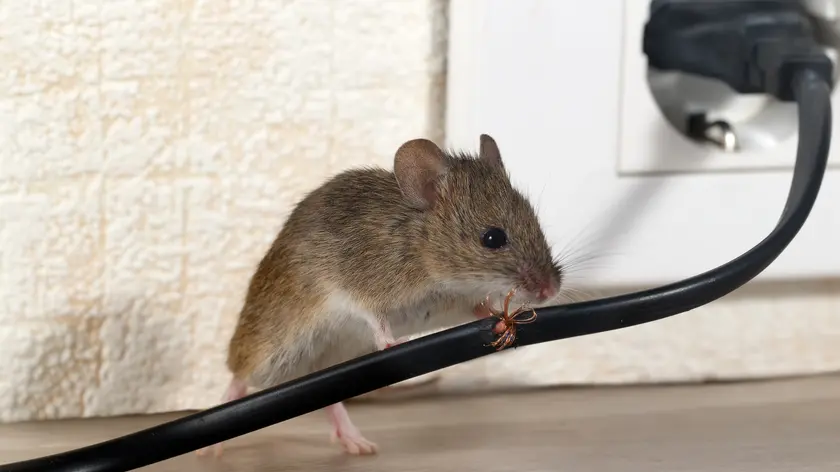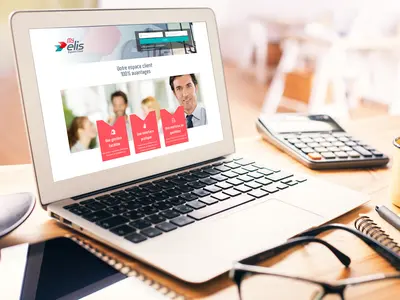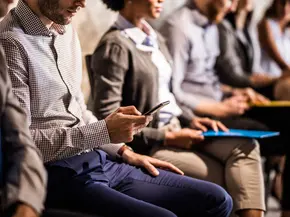Avoid a mice infestation!
The most common rodent on the premises
Have you seen a little grey fur ball with a triangular head that runs away whenever it crosses your way? If yes, then you probably encountered a mouse!
This small mammal, the Mus Musculus, more commonly known as the grey mouse or the house mouse, is native from western Asia and has been invading our homes and spaces for thousands of years.
We owe this success to mankind, who, sometime-unknowingly, would bring the mouse along on his expeditions to discover new lands.
“While the cat’s away, the mice will play”. Despite its discreet and shy appearance, the mouse cannot stop exploring every nook and cranny as soon as the coast is clear. Unlike its cousin the rat, neophobic by nature, the mouse has a morbid curiosity. Which is why it is the most common rodent found in homes.
Constantly searching for new territories and new sources of food, it invades our living spaces, bringing with it all sorts of nuisances.
What to do in case of an infestation ?
A mouse invasion is a race against time, therefore it's important to take the necessary precautions quickly after the first sign of their presence.
Since your premises have everything a mouse needs to survive - shelter, food, and warmth - it won't leave of its own accord! It is therefore not easy to deal with a mouse infestation on your own, and it can quickly become a real horror movie.
This is why our Pest Control teams are trained in the procedures and operating methods for using pest control solutions to treat mouse infestations. They are also familiar with the lifestyle of these pests and adapt their treatment to the characteristics of your premises and the level of infestation. Call on our pest control experts.
Risks of an infestation
A clean and healthy reception area or space reflects a good brand image to your customers and/or employees, so it's important protect against the risk of rodent infestation.
Mice are vectors of several dangerous diseases such as leptospirosis, a bacterial disease, and salmonellosis. They are also a source of stress and paranoia for anyone who has ever been the victim of an infestation. Unfortunately, it does not only cause human damage, but also material damage to any buildings, by attacking foundations and electrical cables, sometimes even causing fires.
Our experts will support you in the prevention of these risks and present you with curative solutions in case of infestation. After an audit of the area, they intervene quickly to provide the best solutions to protect your premises.
Mouse characteristics
- Life span: 1 to 2 years
- Its body measures between 2 and 4 inches
- It weighs on average between 20 and 50g
- It has a malleable skeleton that allows it to crawl around
- It consumes an average of 3g of food per day and rarely drinks water
- Their incisors are constantly growing (0.4 inch/month) which explains their constant need to gnaw
- The mouse is an excellent climber and jumping champion and is a good swimmer
- It has a highly developed sense of hearing, smell and taste but poor eyesight.
- She reaches sexual maturity after 45 days
- Gestation period: 20 days
- 1 pair of mice = 3,000 offspring per year

Its lifestyle
- It lives in colonies
- Nests inside buildings (false ceilings, pantries, attics, under floors, behind large appliances)
- Revisits its territory every 24 hours
- They are more active at night than during the day
- They communicate through their pheromones
How do mice get into your home?
Thanks to its malleable skeleton, the mouse can get into any hole the size of a penny! It crawls through cracks, leaving behind traces of urine and excrement that will attract other mice nearby.
Once inside, it begins its exploration, looking for shelter, food or warmth. The perfect place for her to continue her lineage and induce nightmares to the owners who will soon become infested.
The right habits to avoid infestations
- Take out the waste regularly
- Close the bins
- Clean up food scraps
- Avoid accumulating objects to avoid giving them a nesting place
- Keep food in airtight containers (preferably glass)
- Put away pet food in the evening
- Check that the building is airtight
- Install door sills
- Fill in cracks and holes
- Cut back tree branches that may touch the building so that they cannot use it as a bridge
- Do not allow them access to water
- Check that all taps are closed
How to recognise a mouse infestation ?
- Scratching noises
- Footprints in the form of miniature stripes
- Presence of black droppings grouped together, the size of a small grain of rice
- characteristic ammonia-like odour of urine
- Traces of fat and soot along the walls
- Damaged packaging
- Gnawed wires
- Presence of burrows
- Teeth marks in walls

Our Certifications
All of our specialized technicians have the Certibiocide certificate in accordance with the regulations.
Discover more about Elis Pest Control
If you need information or a quote for your project, our teams are here to help. Contact us!
*Required fields
Account details












